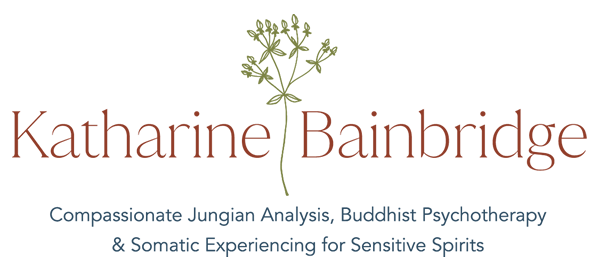
We now know that our bodies both contain and store emotional pain as well as our traumatic memories. People often don’t appreciate that symptoms of PTSD can be experienced, oddly enough, as both intrusive as well as avoidant.
Intrusive symptoms can be experienced as flashbacks, nightmares, as well as physical pain and anxiety including panic attacks. Avoidant symptoms, which in my experience is much more common, look more like disassociation, disconnection, a feeling of being numb or checked out. Sometimes people with PTSD are so numb that they even believe that they are actually doing ok! Although people can report to me that they “feel ok,” we might talk together and begin to notice that there is actually an absence of joy, desire, or even any interest to connect with others. In other words, “I feel OK, ” can often be code for, “I actually don’t feel much of anything.”
Fortunately, neuroscience, especially polyvagal theory, has helped us tremendously in understanding how PTSD can be both expressed as activation and stress in the body as well as numbness, avoidant feelings such as isolation and numbing behavior. Resolving trauma creates new pathways of feeling safe and connected- even within ourselves. No longer do people need to feel isolated and lonely because of trauma. Trauma finally has a way to resolve itself. That solution, that I practice with both myself as well as with my patients, is called Somatic Experiencing.
According to Dr. Peter Levine, the originator and developer of Somatic Experiencing, trauma is basic survival energy that has been locked in the body and nervous system. He is talking about life energy- literally the energy of life itself. This energy is powerful and it takes time for people with trauma to be able to build capacity enough to feel it so that they might once again feel alive. Paradoxically, it can be this very life energy that feels quite threatening and even terrifying to survivors of trauma.
Little by little, stitch by stitch, in our work together my patients and I slowly begin to work with their bodies capacity to feel this powerful life energy by simply focusing on sensations in the here and now.
It is not unusual for people with trauma to feel that their body is the very thing that has betrayed them in the first place. Usually, especially when there has been a great deal of trauma, the body does not feel safe enough to experience pleasure or pain. There can be an emphasis to focus on what is wrong or what might be wrong both mentally as well a physically. Traditional psychotherapy is often geared toward the focus of what is “wrong.” For trauma survivors, this focus is not helpful at all. The nervous system is already hyper vigilant toward what is “wrong.” What if we focused on what is actually right? What if we focused on what is sane, stable or working? What if we befriended our bodies and discovered that it has been doing a wonderful job taking care of us and helping us to survive but it needs our gentle help in relaxing and feeling safe again?
Unfortunately, for many people who have only experienced “verbal” or talk therapy, implicit memories evoked while talking more often than not bring with the memory a sense of hyperarousal of their sympathetic nervous system and a sense of helplessness, fear or shame and rage. In and of themselves these emotional states are not necessarily a problem. When they are chronically experienced alongside the memory of a trauma, these emotional states become problematic in that that there is no way out of this repetition of the original trauma by focusing on those emotional states. The body needs a new “brain/body map” in order to feel relief. A different solution is needed. We do not need to look directly into the face of Medusa and turn to stone. In the office with me, we focus on this innate solution. The body organically knows how to resolve the trauma. I am literally just a witness who encourages the body into its own wisdom and subsequent recovery. People often feel an immediate shift in their state of being after an SE session with me. I encourage befriending their own bodies outside of the office in between session time with me.
Gentle Yoga classes can provide people with a slowed down sense of themselves in a body. Following the breath while focusing on what part of your body is moving allows for a kind of synchronization that our nervous systems respond to as both sane and safe.
When we are dysregulated, we feel neither safe nor sane. Indeed, we are actually not even in the present moment. As a Buddhist, this is the very definition of insanity. The mind and body cannot relax. We are unable to be right where we are without judgment. We are not synchronized in body and mind.
If you are interested in trauma work, but are too afraid to approach your own body or don’t even know where to start, try attending a gentle yoga class. Begin to make friends with your own body. See what you notice, or not, while in class. Simply notice where you are when you begin class. Just notice yourself on the mat. Take time to slow down even more during class to check in with how your body might be feeling right here and now.
Most importantly, notice how you are experiencing yourself in a body after your class. Was there a shift? Were you able to experience anything pleasurable? Did you have any feelings of being safe? Were there moments of feeling unsafe, uncomfortable or panicky?
Working with resolving trauma can actually be easy. It does not have to be hard. You have already been through the hardest part. Whatever happened already happened. Your body just needs some very specific attention and care to complete whatever was unable to complete in order to defend and/ or protect yourself. Actually being in your body is a very empowering experience. Trust me, you are worthy of being able to feel empowered and alive in a body. You have already made it this far. Making friends with your body is actually the very first step in healing trauma.

